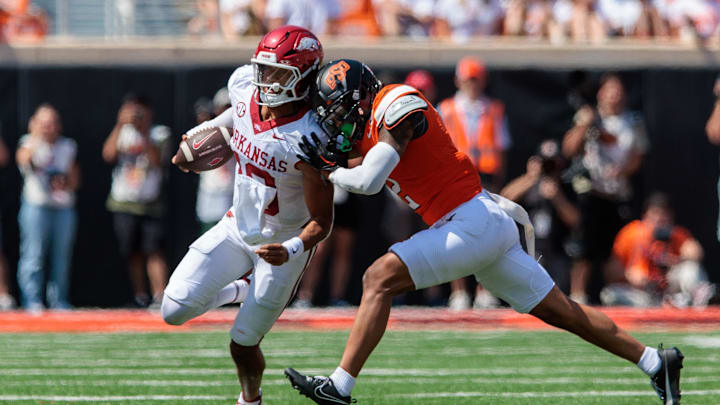Oklahoma State Needs to Solve Defensive Problems Against Tulsa

Oklahoma State’s defense is desperate for a thorough performance.
Throughout the first two weeks, OSU has struggled to play as a unit defensively. With Trey Rucker leading the nation in tackles and him and Nick Martin earning the first two Big 12 Defensive Player of the Week honors, it would seem that Bryan Nardo’s unit has thrived.
However, the Cowboys' defense has been among the worst in college football to begin the season. In Week 1, OSU got past a South Dakota State team that played average offensively. Still, allowing big plays helped SDSU earn 388 yards and manage 20 points in a game where OSU had firm control.
OSU coach Mike Gundy and others stressed the importance of not allowing big plays to kill the team going into its matchup with Arkansas. In Week 2, OSU allowed 25 big plays, which is defined as passes of 15+ yards on rushes of 10+ yards.
OSU’s inability to prevent chunk plays and backbreaking errors gave Arkansas a 14-point lead at halftime. OSU continued to struggle in the second half but played better. Forcing key turnovers was just enough for OSU to get out of the Arkansas matchup with an undefeated record.
Although the Cowboys escaped in double overtime, the Razorbacks’ 648 total yards thrust OSU’s defense into one of the worst in the country statistically. Allowing 518 yards per game, OSU is in the bottom five of the FBS. OSU is also one of the 20 worst teams in yards per play and in the 10 worst in first downs allowed.
While Tulsa’s offense has not looked impressive this season, holding it to an average game would be a massive step forward for the Cowboys. With Collin Oliver set to miss significant time, OSU’s defense needs a boost and it has plenty to figure out ahead of its conference opener next week.
READ MORE: Tulsa HC Compliments Oklahoma State Star LB
Want to join the discussion? Like Oklahoma State Cowboys on SI on Facebook and follow us on Twitter to stay up to date on all the latest Cowboys news. You can also meet the team behind the coverage.
